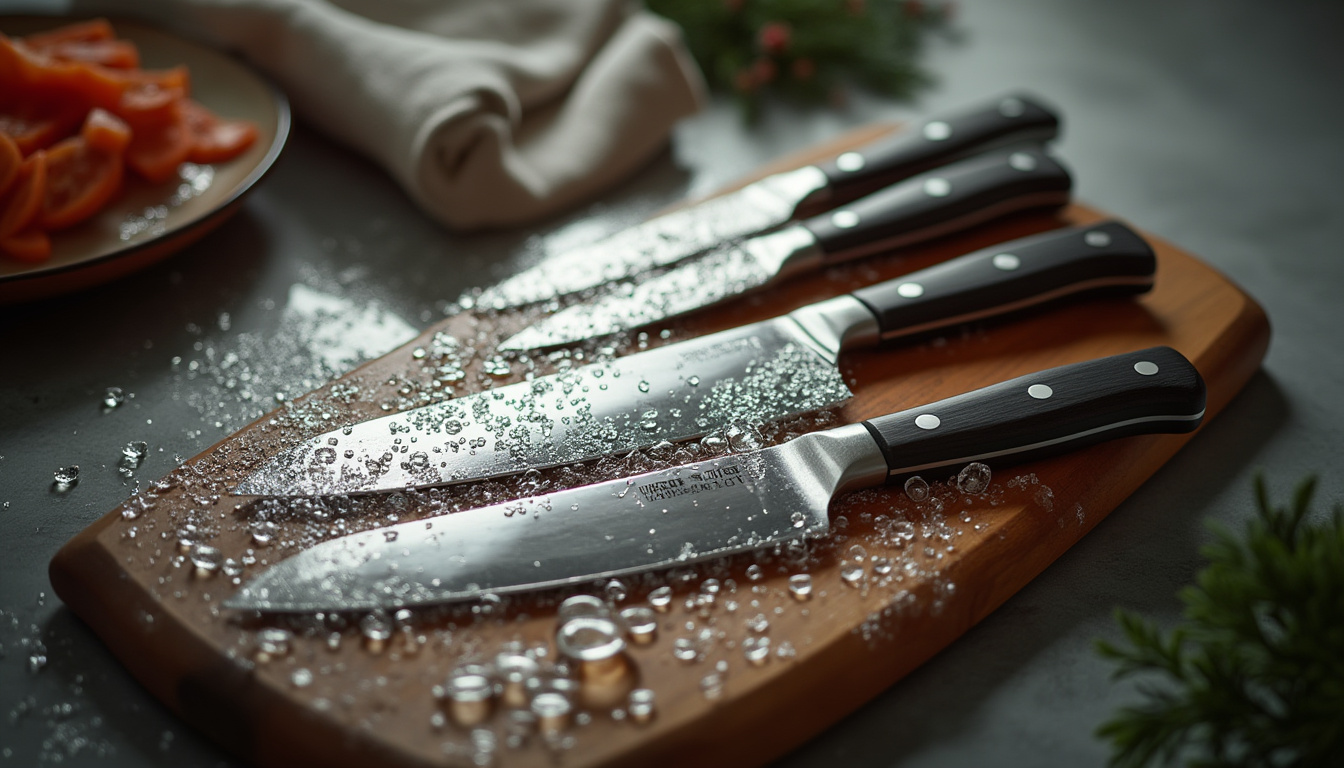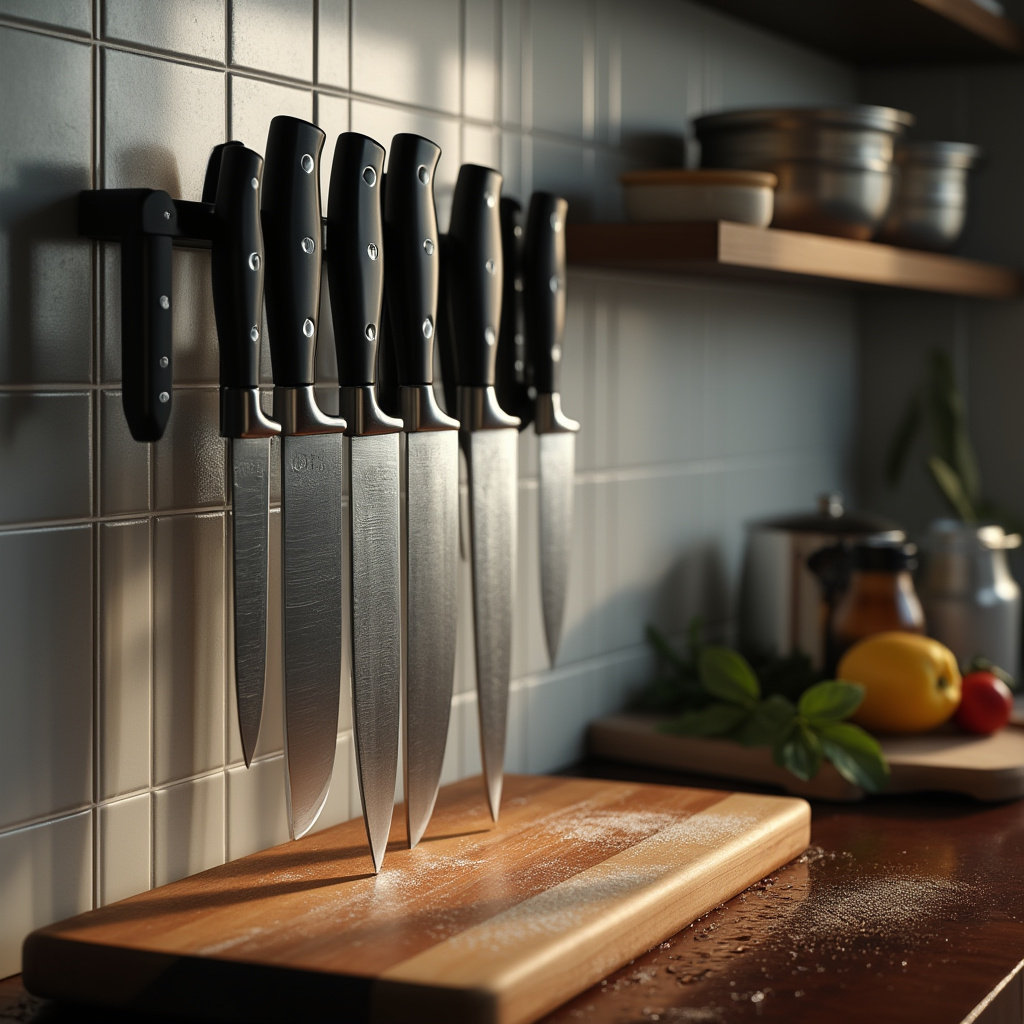How to Care for Professional Knives
Professional knives are an essential tool in any kitchen, whether you’re a seasoned chef or a home cook. However, these precision instruments require proper care to maintain their quality, performance, and longevity. Neglecting your knives can lead to dull edges, rust, and even safety hazards. In this comprehensive guide, we’ll walk you through the best practices for caring for your professional knives, ensuring they remain sharp, safe, and effective for years to come.
Cleaning and Drying
Cleaning your knives is the first step in maintaining their condition. Always hand wash your knives immediately after use with warm water and mild soap. This prevents food residue from hardening on the blade, which can be difficult to remove later.
Avoid using harsh detergents or abrasive scrubbers, as these can damage the blade’s finish or strip away its protective coatings. Instead, opt for a gentle cleaning process that preserves the knife’s integrity.
Once cleaned, dry your knives thoroughly with a clean cloth. This step is crucial for preventing water spots and potential rusting, especially for carbon steel knives, which are more prone to corrosion.
Proper Storage
How you store your knives is just as important as how you clean them. Proper storage protects the blades from damage and prevents accidents. There are several effective ways to store your knives:
- Magnetic knife strips: These are convenient and keep your knives within easy reach while protecting the blades from contact with other objects.
- Knife blocks: Wooden or plastic blocks provide individual slots for each knife, preventing them from bumping against each other and reducing the risk of injury.
- Individual knife sheaths: These are ideal for storing knives in a drawer or when transporting them, as they protect both the blade and anyone handling the knife.
Avoid storing knives loosely in drawers, where they can bump against other utensils and potentially cause damage or injury. A well-organized storage system ensures both safety and longevity for your knives.
Sharpening and Honing
Regular maintenance of your knife’s edge is essential for optimal performance. Sharpening and honing are two key processes that work together to keep your blades in prime condition.
Start with honing, which should be done regularly using a honing steel. This process realigns the blade’s edge, correcting any micro-tears or misalignments that occur during use. Honing does not remove metal but rather straightens the edge, ensuring your knife stays sharp between sharpening sessions.
Sharpening, on the other hand, involves removing small amounts of metal to restore a dull edge. Use a whetstone or consider a professional sharpening service for best results. For carbon steel knives, applying a thin layer of food-grade mineral oil after sharpening can help prevent rust and maintain the blade’s condition.
Cutting Surface
The surface on which you cut can significantly impact the longevity of your knife’s edge. Always use a cutting board made of wood or plastic, as these materials are gentle on the blade and reduce wear.
Avoid cutting on hard surfaces such as glass, marble, or metal. These materials can quickly dull the knife’s edge and even cause chips or cracks in the blade. A soft, even cutting surface is essential for maintaining the sharpness and integrity of your knife.
Proper Technique
Using the correct technique when cutting is crucial for extending the life of your knives. Always use the right knife for the task at hand, as different knives are designed for specific purposes.
Avoid twisting or applying lateral pressure to the knife while cutting, as this can cause unnecessary wear on the blade. Instead, use smooth, controlled motions that allow the knife to glide evenly through the material. Proper technique not only preserves the knife’s edge but also enhances safety in the kitchen.
Special Care for Carbon Steel Knives
Carbon steel knives require extra attention due to their susceptibility to rust. Clean and dry these knives immediately after use to prevent moisture from causing corrosion.
Apply a thin layer of food-grade mineral oil to the blade to create a protective barrier against rust. Over time, with proper care, a patina will develop on the blade. This patina is a natural, non-rust layer that enhances the knife’s resistance to corrosion while maintaining its sharpness and performance.

Conclusion
Caring for professional knives is an essential part of maintaining their performance, longevity, and safety. By following proper cleaning, storage, sharpening, and technique practices, you can ensure your knives remain in optimal condition. Regular honing, avoiding harsh cleaning agents, and using the right cutting surfaces are just a few of the many steps that contribute to the longevity of your blades. For carbon steel knives, extra attention to rust prevention and patina development will enhance their durability and performance. With consistent care and attention, your professional knives will continue to serve as reliable tools in your kitchen for years to come.
Frequently Asked Questions
- How do I best clean my professional knives?Always hand wash your knives with warm water and mild soap. Avoid harsh detergents or abrasive scrubbers, as they can damage the blade. Dry thoroughly after cleaning to prevent rust.
- What is the best way to store my knives?Use magnetic strips, knife blocks, or individual sheaths to store your knives. Avoid loose storage in drawers to prevent damage and injury risks.
- How often should I sharpen my knives?Sharpen your knives as needed when they become dull. Regular honing with a steel can maintain sharpness between sharpening sessions.
- Do carbon steel knives require special care?Yes. Clean and dry carbon steel knives immediately after use, and apply a thin layer of food-grade mineral oil to prevent rust. Over time, a protective patina will develop.
- Why is proper cutting technique important?Proper technique prevents unnecessary wear on the blade, reduces the risk of damage, and enhances safety. Always use smooth, controlled motions and the right knife for the task.

Leave a Reply